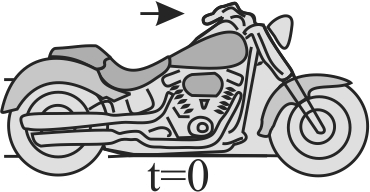355492
A motorcycle of mass \(m\) resting on a frictionless road moves under the influence of a constant force \(F\). The work done by this force in moving the motorcycle is given by \(F^{2} t^{2} / 2 m\), where \(\mathrm{t}\) is the time in seconds.
Ratio of instantaneous power to average power of the motorcycle in \(t = T\) second is:
355492
A motorcycle of mass \(m\) resting on a frictionless road moves under the influence of a constant force \(F\). The work done by this force in moving the motorcycle is given by \(F^{2} t^{2} / 2 m\), where \(\mathrm{t}\) is the time in seconds.
Ratio of instantaneous power to average power of the motorcycle in \(t = T\) second is:
355492
A motorcycle of mass \(m\) resting on a frictionless road moves under the influence of a constant force \(F\). The work done by this force in moving the motorcycle is given by \(F^{2} t^{2} / 2 m\), where \(\mathrm{t}\) is the time in seconds.
Ratio of instantaneous power to average power of the motorcycle in \(t = T\) second is:
355492
A motorcycle of mass \(m\) resting on a frictionless road moves under the influence of a constant force \(F\). The work done by this force in moving the motorcycle is given by \(F^{2} t^{2} / 2 m\), where \(\mathrm{t}\) is the time in seconds.
Ratio of instantaneous power to average power of the motorcycle in \(t = T\) second is:
355492
A motorcycle of mass \(m\) resting on a frictionless road moves under the influence of a constant force \(F\). The work done by this force in moving the motorcycle is given by \(F^{2} t^{2} / 2 m\), where \(\mathrm{t}\) is the time in seconds.
Ratio of instantaneous power to average power of the motorcycle in \(t = T\) second is: